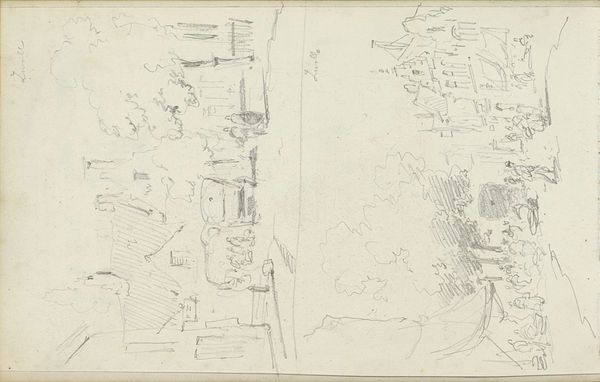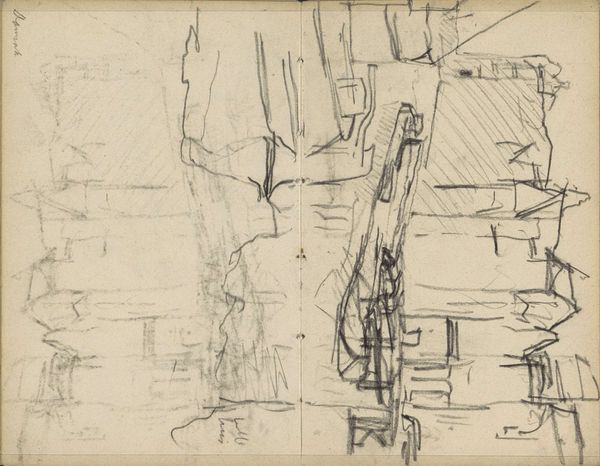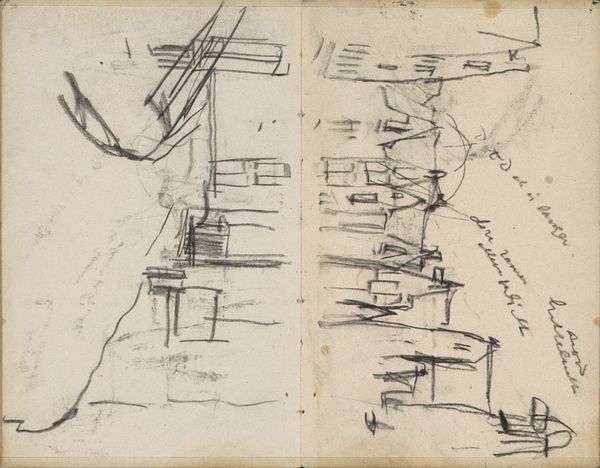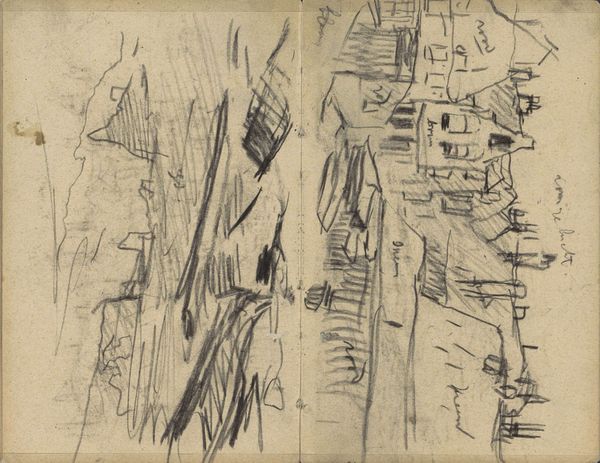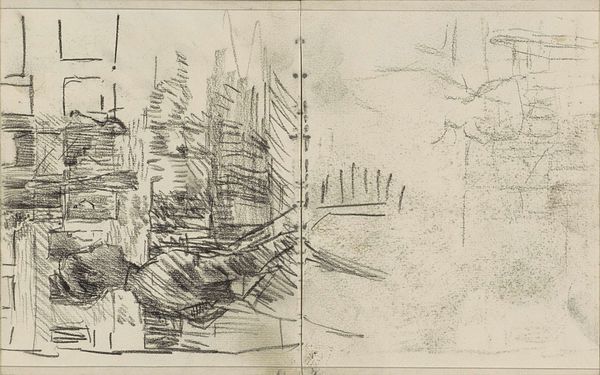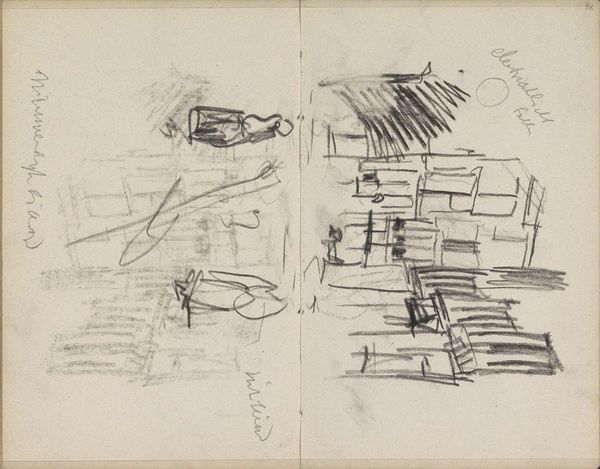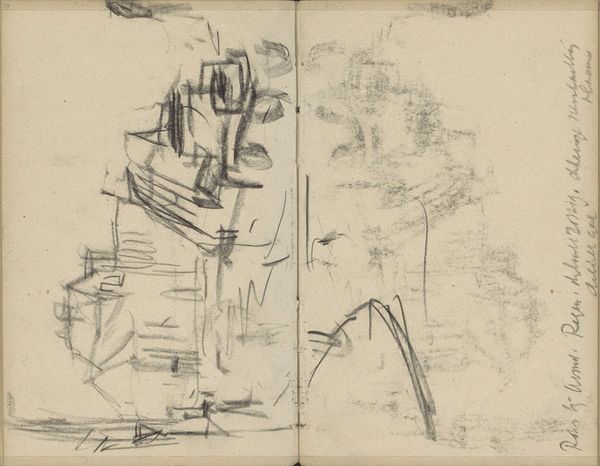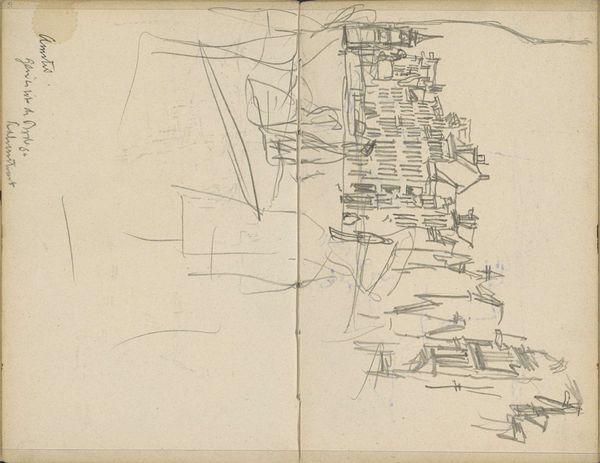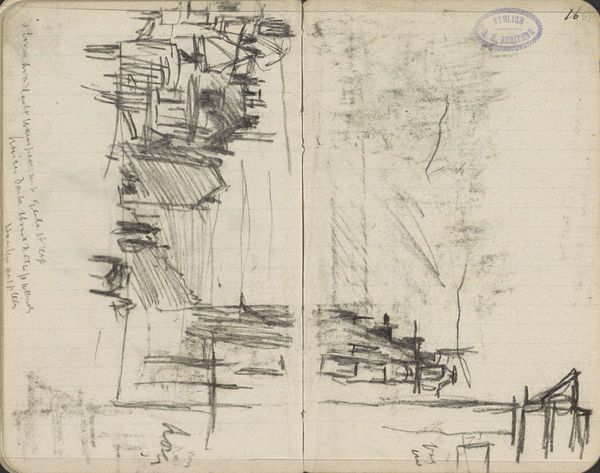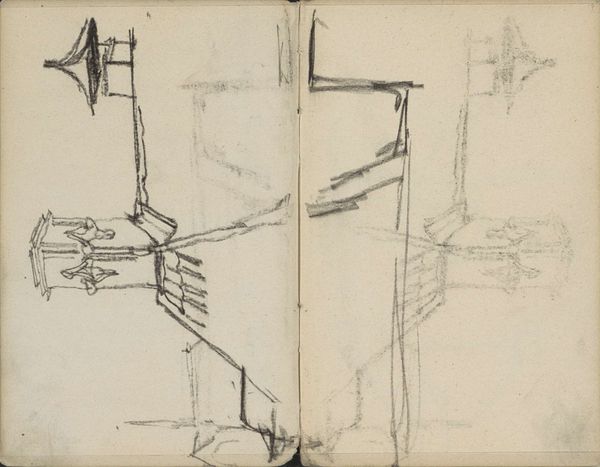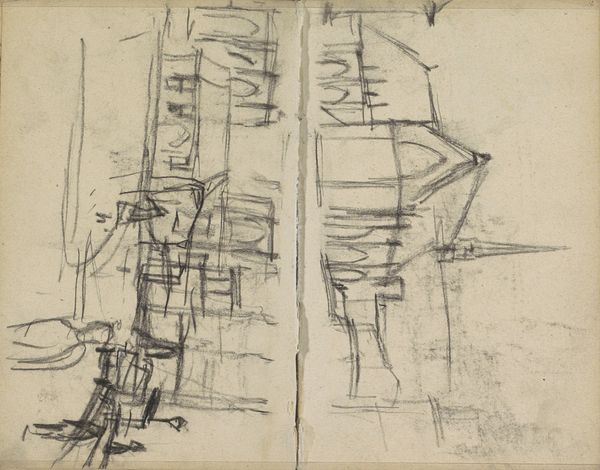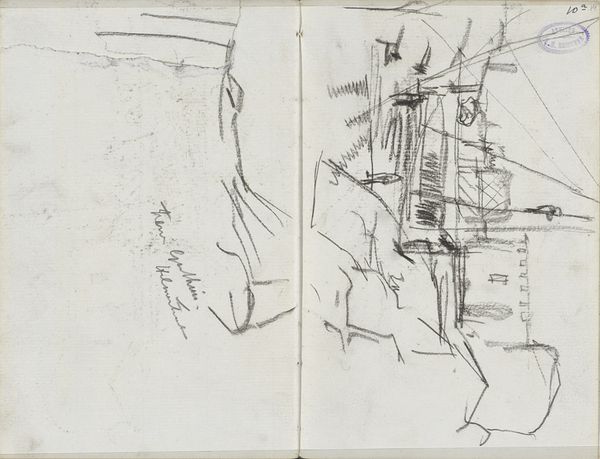
Twee gezichten op de Paleisstraat te Amsterdam, gezien vanaf de brug over het Singel c. 1886 - 1903
0:00
0:00
Copyright: Rijks Museum: Open Domain
Editor: Here we have George Hendrik Breitner’s pencil drawing, "Twee gezichten op de Paleisstraat te Amsterdam, gezien vanaf de brug over het Singel," dating from around 1886 to 1903. It’s a cityscape, and there’s something quite restless about the sketch-like quality of the composition. What do you see in this piece? Curator: This work encapsulates the spirit of a rapidly changing Amsterdam, a city grappling with modernization and industrialization. Breitner, often associated with the working class and the urban experience, captures more than just buildings. Consider the perspective: it is from a bridge, looking down. How might the vantage point speak to the observer's implied position in Amsterdam’s social hierarchy? Editor: That’s a really interesting angle, the perspective as social commentary. I hadn't thought of it that way. Curator: Exactly. And look at the quick, almost frantic, lines. What emotions or social observations might these express in contrast to traditional landscape art? Editor: It makes me think of constant movement and maybe a bit of anxiety about the changes happening in the city. It doesn’t feel like a romanticized view. Curator: Precisely. Breitner isn't just depicting buildings; he's offering a perspective on a city in flux. This work reflects the anxieties and energies of the era, opening a dialogue about the social and political landscape embedded in urban development. What do you think? Editor: I now see that it’s not just a simple sketch. It really reflects the tensions within Amsterdam at that time, both architecturally and socially. Thank you! Curator: Absolutely! It's in these tensions that the real meaning of art often resides.
Comments
No comments
Be the first to comment and join the conversation on the ultimate creative platform.
